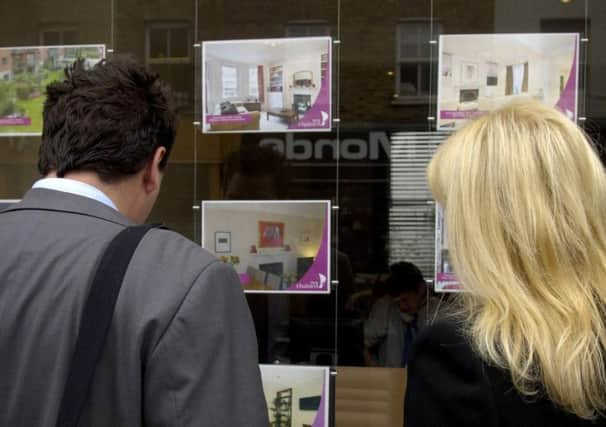First-time buyers making a comeback


Two reports reveal a glimmer of hope for those who worry that first-time buyers are being driven to near extinction.
The Halifax study that 359,000 people got on the first rung of the property ladder last year, compared to 339,600 in 2017. This takes the numbers to just below the 359,900 recorded ten years ago, in the buoyant period just before the property crash. In Yorkshire, the figures broke the barrier with 30,000 first-time buyers in 2007 and 30,003 last year.
Advertisement
Hide AdAdvertisement
Hide AdHowever, the Halifax also say that first-timers are now paying double the deposit they did ten years ago. The average is now £33,339 compared with £17,740 in 2007. In Yorkshire, the average deposit is £20,678 or 15 per cent of the purchase price of £139,970.
The average new buyer is 31 or 33 in London, which is two years older than a decade ago. The youngest buyers are in the Staffordshire Moorlands with an average age of 28 and the oldest are in Richmond upon Thames at 35 years old.
Only two areas have seen a decline in first-time buyers over the past decade. In London, they fell by 26 per centfrom 57,900 in 2007 to an estimated 42,983 in 2017. The north east saw a five per cent drop from 17,300 to 16,430.
Russell Galley, managing director at Halifax, says: “This ten-year high in the number of first-time buyers shows continued healthy movement in this key area despite a shortage of homes and the ongoing challenge of saving enough of a deposit. Low mortgage rates, high levels of employment and government schemes, such as Help to Buy, have helped first-time buyers become a much greater segment of the market, and the recent abolition of stamp duty for first-time buyers on purchases of up to £300,000 is likely to continue stimulating this growth.”
Advertisement
Hide AdAdvertisement
Hide AdThe National Association of Estate Agents December data concurs. It shows that the number of people buying for the first time rose to 32 per cent, up from 27 per cent in November and 44 per cent of NAEA members believe that the government’s recent stamp duty cut has acted as a catalyst.
Mark Manning of Yorkshire-based estate agency Manning Stainton says his statistics also point to a rise in those buying for the first time. “We saw a six per cent increase last year. What’s even more impressive is that this number is 37 per cent higher than in 2013.”
*Here are some tips on how to get on the property ladder:
*Lenders will look at your credit history and will look for debts and missed payments. They also like to see proof that you can repay responsibly. So it can help to spend on a credit card but pay it back in full each month. They scrutinise bank statements and outgoings so cut back on anything that looks like a luxury.
*Get a Help to Buy ISA. This is free mmoney. For every £200 saved in the ISA, the government adds a bonus of £50. The maximum bonus on savings is £3,000. If there are two of you buying together, you are both entitled to a Help to Buy ISA. To qualify for the 25 per cent top-up, you need to have saved at least £1,600.
Advertisement
Hide AdAdvertisement
Hide Ad*Rent is probably your biggest outlay so investigate moving somewhere cheaper or back in with parents. If you don’t mind roughing it a little then consider being a property guardian for Ad Hoc. The licence fees including bills are as little as £250 a month. Ad Hoc specialises in creating temporary homes in empty building, www.adhocproperty.co.uk
*Save. Do you need to eat out so much? Can you take a sandwich and a coffee to work instead? If you spend £5 on lunch five days a week – it adds up to about £1,000 a year.
*Look at shared ownership. Bigger new housing developments usually have a quota of affordable homes administered by a housing association. You can often buy a share ranging from 25 per cent to 75 per cent. There are restrictions. These often state that you must be a first-time buyer and earn no more than £30,000 and you must live or work in the area. At the moment, there’s a one bedroom flat at Escroft Court, Menston for £55,000 for a 40 per cent share, www.blueresidential.co.uk
*If you can’t afford your favourite location look to up-and-coming areas on the outskirts.